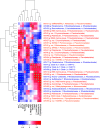Snow-Dependent Biogeochemical Cycling of Polycyclic Aromatic Hydrocarbons at Coastal Antarctica
- PMID: 36655903
- PMCID: PMC9893724
- DOI: 10.1021/acs.est.2c05583
Snow-Dependent Biogeochemical Cycling of Polycyclic Aromatic Hydrocarbons at Coastal Antarctica
Abstract
The temporal trend of polycyclic aromatic hydrocarbons (PAHs) in coastal waters with highly dynamic sources and sinks is largely unknown, especially for polar regions. Here, we show the concurrent measurements of 73 individual PAHs and environmental data, including the composition of the bacterial community, during three austral summers at coastal Livingston (2015 and 2018) and Deception (2017) islands (Antarctica). The Livingston 2015 campaign was characterized by a larger snow melting input of PAHs and nutrients. The assessment of PAH diagnostic ratios, such as parent to alkyl-PAHs or LMW to HMW PAHs, showed that there was a larger biodegradation during the Livingston 2015 campaign than in the Deception 2017 and Livingston 2018 campaigns. The biogeochemical cycling, including microbial degradation, was thus yearly dependent on snow-derived inputs of matter, including PAHs, consistent with the microbial community significantly different between the different campaigns. The bivariate correlations between bacterial taxa and PAH concentrations showed that a decrease in PAH concentrations was concurrent with the higher abundance of some bacterial taxa, specifically the order Pseudomonadales in the class Gammaproteobacteria, known facultative hydrocarbonoclastic bacteria previously reported in degradation studies of oil spills. The work shows the potential for elucidation of biogeochemical processes by intensive field-derived time series, even in the harsh and highly variable Antarctic environment.
Keywords: PAH; biodegradation; biogeochemical processes; coastal Antarctica; marine bacterial communities; polycyclic aromatic hydrocarbons.
Conflict of interest statement
The authors declare no competing financial interest.
Figures





Similar articles
-
Pivotal Role of Snow Deposition and Melting Driving Fluxes of Polycyclic Aromatic Hydrocarbons at Coastal Livingston Island (Antarctica).Environ Sci Technol. 2018 Nov 6;52(21):12327-12337. doi: 10.1021/acs.est.8b03640. Epub 2018 Oct 16. Environ Sci Technol. 2018. PMID: 30277758
-
Metatranscriptomic responses and microbial degradation of background polycyclic aromatic hydrocarbons in the coastal Mediterranean and Antarctica.Environ Sci Pollut Res Int. 2023 Dec;30(57):119988-119999. doi: 10.1007/s11356-023-30650-1. Epub 2023 Nov 7. Environ Sci Pollut Res Int. 2023. PMID: 37934408 Free PMC article.
-
Inputs, amplification and sinks of perfluoroalkyl substances at coastal Antarctica.Environ Pollut. 2023 Dec 1;338:122608. doi: 10.1016/j.envpol.2023.122608. Epub 2023 Sep 22. Environ Pollut. 2023. PMID: 37742857
-
Biodegradation aspects of polycyclic aromatic hydrocarbons (PAHs): a review.J Hazard Mater. 2009 Sep 30;169(1-3):1-15. doi: 10.1016/j.jhazmat.2009.03.137. Epub 2009 Apr 7. J Hazard Mater. 2009. PMID: 19442441 Review.
-
Biodegradation of polycyclic aromatic hydrocarbons: Using microbial bioelectrochemical systems to overcome an impasse.Environ Pollut. 2017 Dec;231(Pt 1):509-523. doi: 10.1016/j.envpol.2017.08.048. Epub 2017 Aug 29. Environ Pollut. 2017. PMID: 28841503 Review.
Cited by
-
Incorporation and Distribution of Polycyclic Aromatic Hydrocarbons in Experimental Sea-Ice.Environ Sci Technol. 2025 Apr 15;59(14):7310-7319. doi: 10.1021/acs.est.4c13839. Epub 2025 Apr 2. Environ Sci Technol. 2025. PMID: 40175318
-
Advanced enzyme-assembled hydrogels for the remediation of contaminated water.Nat Commun. 2025 Mar 28;16(1):3050. doi: 10.1038/s41467-025-58338-9. Nat Commun. 2025. PMID: 40155380 Free PMC article.
References
-
- Cabrerizo A.; Galbán-Malagõn C.; del Vento S.; Dachs J. Sources and Fate of Polycyclic Aromatic Hydrocarbons in the Antarctic and Southern Ocean Atmosphere. Global Biogeochem. Cycles 2014, 28, 1424–1436. 10.1002/2014GB004910. - DOI
-
- González-Gaya B.; Fernández-Pinos M.-C.; Morales L.; Méjanelle L.; Abad E.; Piña B.; Duarte C. M.; Jiménez B.; Dachs J. High Atmosphere–Ocean Exchange of Semivolatile Aromatic Hydrocarbons. Nat. Geosci. 2016, 9, 438–442. 10.1038/ngeo2714. - DOI
-
- Cai M.; Liu M.; Hong Q.; Lin J.; Huang P.; Hong J.; Wang J.; Zhao W.; Chen M.; Cai M.; Ye J. Fate of Polycyclic Aromatic Hydrocarbons in Seawater from the Western Pacific to the Southern Ocean (17.5°N to 69.2°S) and Their Inventories on the Antarctic Shelf. Environ. Sci. Technol. 2016, 50, 9161–9168. 10.1021/acs.est.6b02766. - DOI - PubMed
Publication types
MeSH terms
Substances
LinkOut - more resources
Full Text Sources

